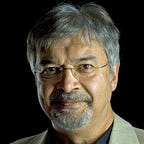Countertenor Dennis Orellanas
It is a unique and fascinating form of classical singing, taken to new heights by a Honduran teenager.
Many decades ago I became obsessed by two British singers who performed Henry Purcell’s “Come Ye Sons of Art”, and specially the fourth movement “Sound the Trumpet”. It is a piece of music, written in 1694, which I dearly loved.
The singers were Alfred Deller and his brother Mark, who presented Purcell’s piece in a very unusual way. I would normally have to describe what was so special about their performance, but luckily it is available on YouTube, so you can listen to it yourself. Click on the video below and prepare for a big surprise!
Alfred and Mark Deller were countertenors! This is a type of classical male singing where the voice range is equivalent to that of the female contralto or mezzo-soprano voice types, extending from around G3 to D5 or E5, or even the soprano’s range of C4 to C6. They achieve this by using a part of their voice called falsetto or head voice. Here’s how it works:
Males develop longer vocal chords at puberty and use their chest voice for speaking and singing, with the vocal cords vibrating from their base. This creates a rich, deep sound. Countertenors primarily use their head voice, which is produced by vibrating only the edges of the vocal chords. This results in a lighter, higher sound, which extends the singing range upwards. I should mention that countertenors must be distinguished from castrati, who were male singers castrated before puberty to preserve their shorter vocal chords and thus their prepubescent soprano range. This barbaric practice is of course no longer allowed.
Alfred (the older, bearded brother) and Mark Deller were not the only ones to fascinate me. Here are three modern countertenor duos singing Percell’s Sound the Trumpet. And here are five countertenors generally talking and performing — well worth watching. I was always fascinated by operatic encounters with these singers, many with distinguished careers. One favourite: German countertenor Jochen Kowalski, singing the Orlofsky aria from Die Fledermaus.
Then one day I stumbled on a 16-year-old Honduran lad, who introduced himself thus:
I love Verdi’s Sempre Libera and have listened to it performed by dozens of famous sopranos. But Dennis Orellana singing it in the hallway of his apartment sent shivers down my spine. The way this teenager hits every note cleanly is beyond belief.
The above video is five years old. Here’s a version performed three years ago, winning a Golden Buzzer on Spain’s Got Talent.
Note that Dennis no longer sings the final E-flat, written by Verdi. That is challenging for many female sopranos as well.
In the meantime Dennis has embarked on a successful operatic career. If you share my spine-tingling fascination with the young Hondurian, there are plenty of YouTube videos to watch. Can I recommend the following, recorded a year ago:
Don’t miss this. There may be a better way to spend 25 minutes — but I must confess that I have not found it.
Also read: My three most powerful musical experiences
